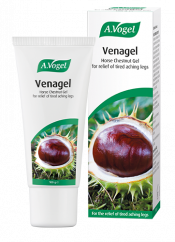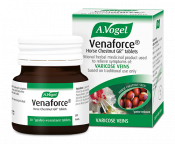Poor circulation during perimenopause and menopause
Oestrogen is really important for helping to keep our blood vessels, and especially the veins, nice and toned. Oestrogen helps to keep blood vessels functioning well. It also maintains the venous tone; so, it's keeping our circulatory system nice and strong.
As levels of oestrogen start to fall during perimenopause and menopause, this can cause what's called venous insufficiency. So basically, the blood vessels get weaker. They start to expand.
Circulation-related leg symptoms
Here are a few circulation-related symptoms you can experience when it comes to your legs during perimenopause and menopause:
Varicose veins, spider veins & varicose ulcers
You can end up with things like varicose veins and spider veins. Also, because the blood tends to pool a lot in the lower leg, not moving up towards the heart as efficiently as it should, that can cause swelling. It can cause discomfort. It can cause skin mottling and eventually things like varicose ulcers.
Tired, heavy legs & cold hands and feet
When you get what's called venous insufficiency, you'll also get things like tired, heavy legs. You might also find that you get cold hands and feet. And one of the things that can happen quite a lot, especially in menopause, is you can end up developing something called Raynaud's disease. And then, if your hands and feet get cold, they can go really blue, really purply, or even a black colour, and it can be very, very painful.
Leg pain & discomfort
You can get general leg pain, which can be things like cramping, spasming, and tingling sensations such as pins and needles. And very often, this can happen if you're walking. You might find you can walk so far and then you start to get cramping, but when you stop, everything calms down. So, this is one of these symptoms that very often cause you not to exercise as much, because when you do exercise, you end up getting a lot of pain. So that in itself can become a vicious circle. If you're not exercising, you're not improving circulation, and then it just gets worse. Your circulation gets weaker because you're not exercising.
Swelling
You might find that you just get general swelling, so your lower legs, especially the ankles and feet, can swell up. They can get really puffy. They can get sore to the touch as well.
Discoloration
You can also get discoloration, so you might find that the skin gets patchy. It might get a bit pale, a bit blotchy. You might start to see varicose veins or spider veins starting to manifest at that point.
Chilblains
It can be chilblains. This is getting a lot more common, especially in this day and age when we're all having to watch our energy bills, so we're keeping our houses cooler. And what can happen is you can then end up getting more chilblains.
Hair loss on the legs
It can be hair loss too. One of the things that can happen generally with menopause is that we tend to lose hair where we don't want to lose it and we end up getting hair where we don't want it. But if the circulation in the legs is poor, then you can start losing hair in the lower legs. And in one way that's a benefit, because it saves you from having to shave anymore.
What can help improve circulation in your legs?
Here are some simple tips for improving circulation in your legs and in general:
Exercise regularly: This is really, really important. It's going to tone up the muscles, especially in the lower legs. And if your muscles are nice and strong, that's going to help support the veins, so it’s less likely that the weaker veins will then cause things like varicose veins.
Walking is probably the best exercise, as well as cycling, swimming, and yoga. The only thing I will say here is that if you are doing walking or exercising and you're getting pain in the lower legs, you need to watch that one, and I'll go into more detail about that further down.
Leg Elevation: If your legs are generally a little bit puffy or sore at the end of the day, then try elevating them for a bit. Use a stool or a pillow to elevate your legs just up that little bit above your hips and that can very often help, especially with water retention.
Compression socks or tights: If you're doing a lot of traveling, wear compression socks or tights, just to keep everything under control, especially if you're flying. That's really quite an important strategy.
Look at your diet: You need a good balance of everything to keep that venous tone going. Something like a Mediterranean diet is really good because it contains loads of antioxidants, which are needed for your veins. Vitamin C is also really important for the integrity of the veins, so make sure you're either taking a vitamin C supplement or you're getting loads of fresh fruit and veg to give you that vitamin C. Limit the salt as well, because too much salt is going to cause water retention.
Supportive Herbs: Herbs like Horse Chestnut are known to help improve venous tone. And we have got extracts of Horse Chestnut, both in our registered Venaforce Tablets and also in our Venagel Horse Chestnut Gel, which is one that you can just apply externally whenever you're feeling discomfort. There's also the herb Ginkgo biloba. This is known to help more with arterial circulation, so that's something you could possibly add as well.
My Top Tip:

- Relieve tired, heavy legs
- Cooling and soothing effect
- Extracts of fresh Horse Chestnut
"Very soothing and makes legs comfortable"

Magnesium: If you're getting leg cramps, especially at night, very often that's a lack of magnesium. So, either take a magnesium supplement with your evening meal, or you can get magnesium skin spray, which can be really helpful. You can just apply that before you go to bed.
Stay well-hydrated: Dehydration will affect absolutely everything, so remember to drink plenty of water on a daily basis.
Avoid Prolonged Sitting or Standing: This is a difficult one if it's part of your job, but try and move about as much as you can. Just a little bit of walking one way or another, because if you're standing completely still, the muscles are not working, and your muscle function helps blood flow.
Massage & skin brushing: The other thing you could do is massage, just a little massage every day. I do it just as a matter of course now. When I've had a shower, I'll put body lotion on afterwards and just give the legs, especially the lower legs, a quick massage. Skin brushing is another good one before you have a shower, just to get your circulation really working well.
Things to watch out for:
Really important thing here, as I mentioned before, if you're doing walking and within maybe 5 or 10 minutes, your legs start to get really, really painful and you have to stop, that can be an indication of something called intermittent claudication. It’s really important to get that one checked out by your doctor.
If swelling and water retention are continuous, and nothing you try works, please go and see your doctor. Swollen ankles can be an indication of high blood pressure. Also go to your doctor if you start to get varicose ulcers. All of these symptoms need medical attention, so please see your doctor about them.
I hope you found this one helpful. All of these are really common symptoms in perimenopause and menopause and it's worth just looking after your circulation to avoid these sorts of things. If any of you have any other tips that you have found have worked really well, please share them as always. You know I love reading everything. And until next time, take care and have a lovely week.
You may also find these topics helpful:
5 signs of poor circulation during menopause
Leg problems during menopause & how to ease them
Menopause & varicose veins: what causes them and what can you do?








